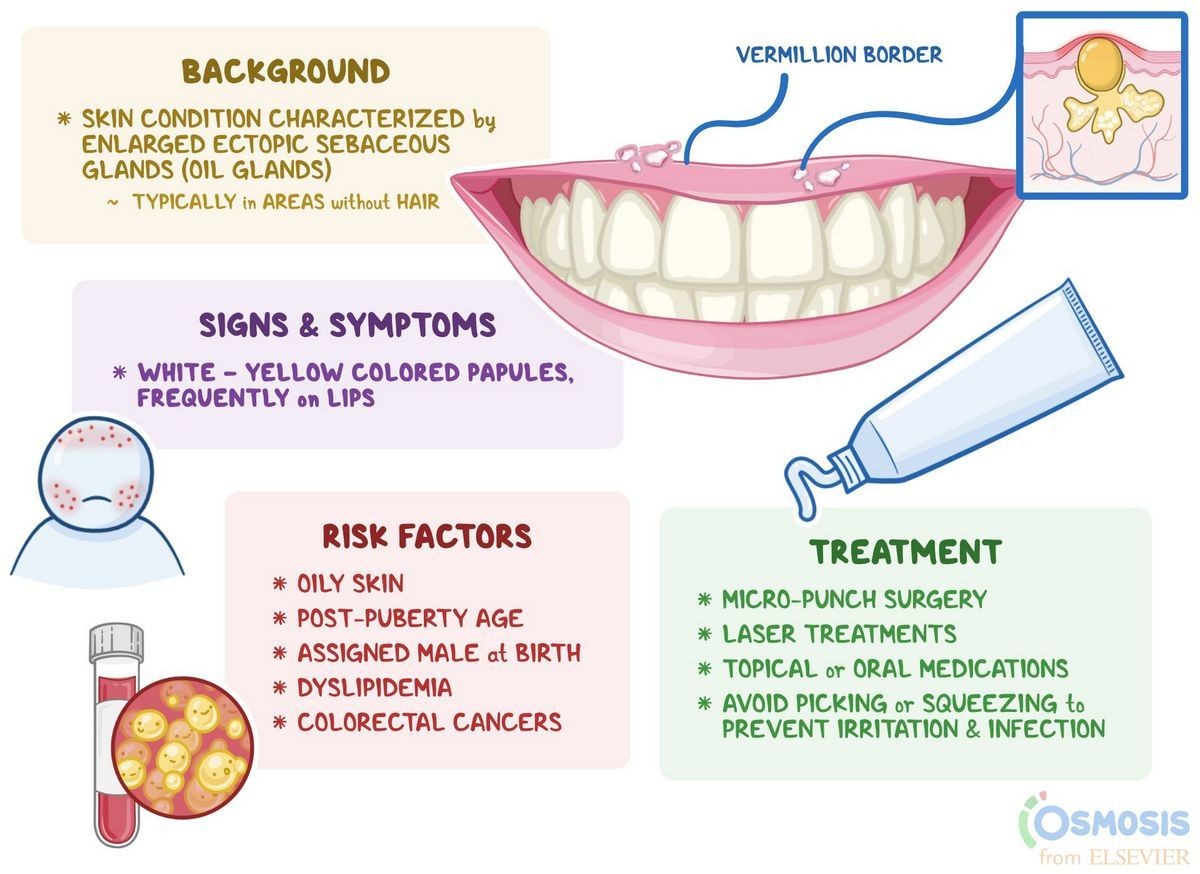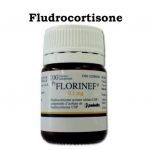
Contents
- 1 Causes of Fordyce Spots on Lips
- 1.0.1 Types of Fordyce Spots
- 1.0.2 Symptoms and signs of Fordyce spots
- 1.0.3 When to see a doctor for Fordyce spots
- 1.0.4 Treatments for Fordyce spots
- 1.0.5 How to naturally get rid of age spots
- 1.0.6 Treating age spots
- 1.0.7 Skincare products
- 1.0.8 Other considerations
- 1.0.9 Subscribe to MedicineNet’s Skin Care & Conditions Newsletter
Causes of Fordyce Spots on Lips
Fordyce spots on lips are caused by high cholesterol, greasy skin, age, rheumatic disorders, and certain types of colorectal cancer.
Fordyce spots, also known as Fordyce granules or Fordyce glands, are enlarged oil glands found on your lips, inside your cheeks, and occasionally on your genitalia. They are common and harmless, having no effect on your general health. In many cases, they are not even visible.
Most Fordyce spots are less than three millimeters wide and appear white or pale yellow. They feel the same as other parts of your lips and cheeks, but may occasionally become irritated due to their raised position. It’s important to note that Fordyce spots are not related to herpes, cold sores, or acne.
While Fordyce spots are safe themselves, they may indicate the presence of other conditions. Recognizing their signs and causes can help you determine whether you should consult your doctor about these conditions.
Types of Fordyce Spots
Fordyce spots are considered a normal variant of skin and not a medical condition. However, having these spots may be more common in individuals with colorectal cancer and rheumatic disorders.
Early trials suggest that a higher number of Fordyce spots on the lips and mouth may indicate high cholesterol levels. This could be connected to lipid levels in the blood.
Symptoms and signs of Fordyce spots
Fordyce spots may be present in up to 80% of the population, but they are only noticeable in some individuals. Men tend to have visible Fordyce spots approximately twice as often as women, although the reasons for this are not fully understood.
Other symptoms often associated with Fordyce spots include:
Greasy skin
People with oily or greasy skin types are more likely to have noticeable Fordyce spots. This is because Fordyce glands are oil glands, and those with naturally higher skin oil production may have enlarged oil glands.
Age
While Fordyce spots can appear at any age, they are more likely to develop during puberty or middle adulthood. This may be related to oil production patterns during these stages of life and could explain why Fordyce spots rarely occur in infants.
Rheumatic disorders
Although there is no known link between rheumatic disorders and Fordyce spots, those with these conditions may be more prone to developing Fordyce spots as they age.
Certain types of colorectal cancer
Similar to rheumatic disorders, individuals with Fordyce spots may be more likely to experience specific types of colorectal cancer. This tendency tends to run in families, meaning that having a relative with Fordyce spots who developed colorectal cancer increases the likelihood of developing the cancer if you also have Fordyce spots.
When to see a doctor for Fordyce spots
If you have white bumps on your lips or inside your cheeks, it’s advisable to discuss them with your physician. They will be able to examine you to determine whether you have harmless Fordyce spots or a more serious condition, such as thrush or oral herpes.
During the examination, your doctor may perform an oral swab to test for the presence of bacteria or viruses. A negative test result usually indicates the presence of Fordyce spots.
Treatments for Fordyce spots
There is no need to treat Fordyce spots for health reasons as they are common and harmless. However, if you find them aesthetically unappealing, several cosmetic treatments can be considered.
Some dermatologists offer laser treatments to remove and prevent the recurrence of Fordyce spots. However, these treatments may result in scarring. Another option is oral isotretinoin, although it should only be taken for short periods of time.
Chemical cauterization has shown promise in successfully treating Fordyce spots without significant scarring or discoloration. To determine the most suitable cosmetic removal treatment, consult with your physician.
How to naturally get rid of age spots
The appearance of dark spots on the skin, commonly known as age spots, is a common skin change. They are typically caused by post-inflammatory hyperpigmentation, hormonal changes, or sun exposure.
Most dark spots are harmless, but you may not like their appearance. While there are many store-bought and doctor-recommended products that can lighten dark spots, you can also try natural remedies using ingredients from your kitchen.
Post-inflammatory hyperpigmentation occurs when your skin produces excess melanin in response to injury or irritation. Acne, insect bites, or psoriasis can trigger this condition. Hormonal changes, such as during pregnancy or due to contraceptives, can also result in dark spots known as melasma. Sun exposure is a common cause of dark spots, especially on the face, arms, and hands.
Treating age spots
You can accelerate the fading of age spots by exfoliating the skin. This process removes the top layer of skin, brightening its overall appearance and speeding up cell turnover. As a result, darkened cells slough off naturally, allowing lighter skin to replace them.
Alpha-hydroxy acids are natural ingredients that can be used for exfoliation. Examples include glycolic acid, lactic acid, and citric acid, often found in skincare products. Foods such as fruit, sour milk or yogurt, and sugarcane contain these acids and can be applied as skin treatments:
Vinegar: Mix apple cider vinegar with water and apply it to dark spots. Rinse after 15 minutes.
Citrus: Dab lemon juice or grapefruit juice onto dark spots and leave it on for 15 minutes. Dilute the juice with water if you have sensitive skin.
Sugar scrub: Create a homemade sugar scrub by adding a small amount of citrus juice or cider vinegar to a handful of brown sugar and a few drops of oil, such as sunflower oil. Gently scrub your face and then rinse.
Yogurt: Unsweetened yogurt can soothe your face and potentially help with age spots. Mixing it with honey provides added anti-inflammatory effects.
It’s important to note that these natural treatments require several weeks to show results since skin turnover takes time. Fading is typically noticeable within 3-6 months.
Skincare products
If natural remedies do not provide the desired results, over-the-counter skincare products can be tried. Look for ingredients known for their ability to help with hyperpigmentation, including azelaic acid, glycolic acid, kojic acid, retinoids, and vitamin C. In case over-the-counter formulations are ineffective, a dermatologist can provide prescription-strength creams containing hydroquinone or tretinoin. Non-invasive skincare procedures such as microdermabrasion, chemical peels, and laser treatments are also effective in fading age spots.
Other considerations
Dark spots can, in some cases, indicate skin cancer. If you have a raised dark spot with an irregular shape or rapidly changing appearance, it is essential to contact your doctor immediately. Early detection ensures better treatment outcomes.
Once you have faded existing dark spots, taking preventive measures can reduce their recurrence. Regularly using sunscreen protects your skin from future sun damage. Wearing protective clothing, wide-brimmed hats, and avoiding excessive sun exposure also helps to keep your skin safe.
Subscribe to MedicineNet’s Skin Care & Conditions Newsletter
By clicking "Submit," I agree to the MedicineNet Terms and Conditions and Privacy Policy. I also consent to receiving emails from MedicineNet and understand that I can opt out of MedicineNet subscriptions at any time.
Sources:
- American Osteopathic College of Dermatology: "Fordyce Spots."
- Annals of Dermatology: "Clinicopathologic Manifestations of Patients with Fordyce’s Spots."
- Dental Research Journal: "Can presence of oral Fordyce’s granules serve as a marker for hyperlipidemia?"
- Gut: "Fordyce granules and hereditary non-polyposis colorectal cancer syndrome."
- Journal de biologie buccale: "Fordyce’s spots: disease, heterotopia or adenoma? Histological and ultrastructural study."
- Scully, C. Oral and Maxillofacial Medicine (Third Edition), Churchill Livingstone, 2013.
- American Academy of Dermatology Association: "HOW TO FADE DARK SPOTS IN SKIN OF COLOR." "HOW TO SAFELY EXFOLIATE AT HOME." "WHAT CAN GET RID OF AGE SPOTS?"
- American Cancer Society: "Skin Cancer."
- American Osteopathic College of Dermatology: "HYPERPIGMENTATION."
- Dermatocare: "HOMEMADE SCRUB: DIY BY DERMATOLOGIST."
- Green, Dr. Michele M.D.: "How To Remove Age Spots Naturally."
- Journal of Cosmetic Dermatology: "Honey in dermatology and skincare: a review."
- Molecules: "Dual Effects of Alpha-Hydroxy Acids on the Skin."
- Molecules: "Dual Effects of Alpha-Hydroxy Acids on the Skin."


